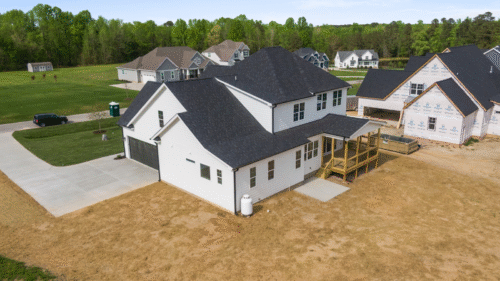Dilapidation reporting is an essential process for property owners, tenants, and contractors across New Zealand. It serves as a comprehensive record of a property’s condition at a specific point in time, protecting all parties involved in lease agreements, construction projects, or property management. In this guide, we’ll explore what dilapidation reporting is, why it matters, and how it benefits everyone from landlords to tenants and contractors.
What is Dilapidation Reporting?
Dilapidation reporting is the process of documenting the existing condition of a property before significant changes occur, such as the start of a new lease or nearby construction work. A dilapidation survey report records any visible defects, wear and tear, and potential risks within the property. The report often includes photographs, written notes, and assessments of structural and non-structural elements.
Why Dilapidation Survey Reports Are Crucial in New Zealand
In New Zealand, dilapidation reports play a vital role in protecting both property owners and tenants. With the country’s unique building environment, including seismic risks and strict compliance with local building laws, these reports help mitigate disputes and ensure proper accountability. They provide legal clarity and help safeguard against costly repair claims.
Who Needs Dilapidation Reports?
Dilapidation reporting is useful for a wide range of stakeholders, including:
– Property owners who want to protect their investments.
– Tenants who need assurance they won’t be blamed for pre-existing damage.
– Construction companies working near existing properties.
By clearly documenting property condition, these reports reduce risk for all parties.
The Dilapidation Report Process
The process of preparing a dilapidation report involves several key steps to ensure accuracy and reliability.
Inspection and Documentation
The first step is a comprehensive building inspection where structural components, walls, floors, ceilings, and external areas are assessed. The inspector notes any signs of wear, damage, or defects that could later become points of dispute.
Photography and Condition Assessment
High-resolution photographs are taken throughout the property to provide clear visual evidence of its current condition. These images are paired with written notes to ensure thorough and accurate record-keeping.
Preparing the Report
After inspection and photography, the findings are compiled into a formal dilapidation survey report. This includes descriptions of existing issues, photographic records, and recommendations for maintenance or repairs where necessary.

Dilapidation Reporting: Legal and Contractual Importance
Dilapidation reporting carries significant legal weight in New Zealand. In lease agreements, it establishes the baseline condition of the property, preventing disputes at the end of tenancy. In construction contracts, it protects contractors from being unfairly held liable for pre-existing damage. By providing a detailed, impartial record, it ensures transparency and compliance with legal obligations.
Benefits of Dilapidation Reporting for Property Owners and Tenants
Both property owners and tenants gain valuable protection through dilapidation reporting. Benefits include:
– Clear documentation of property condition.
– Risk mitigation against false claims.
– Preserving property value.
– Preventing disputes and costly litigation.
This makes the process a win-win for all stakeholders.
Common Issues Highlighted in Dilapidation Reports
During a dilapidation assessment, common issues that may be identified include structural cracks, water ingress, deteriorating paintwork, roof damage, and general wear and tear. Identifying these issues early helps prevent further deterioration and ensures accountability.
How to Choose the Right Dilapidation Reporting Service
Selecting the right service provider is crucial to ensuring the accuracy and reliability of your dilapidation report. Look for providers with expertise in building inspections, extensive experience in New Zealand property standards, and compliance with local laws. At Jim’s Building Inspections New Zealand, we provide professional dilapidation reporting services designed to protect all parties with detailed, comprehensive, and impartial reports.
Cost of Dilapidation Reporting in New Zealand
The cost of dilapidation reporting in New Zealand varies depending on the size of the property, its location, and the level of detail required. Typically, fees range from a few hundred to several thousand dollars for larger commercial properties. Investing in a thorough report can save thousands in potential disputes or repair claims.
What Happens After a Dilapidation Report is Created?
Once completed, the dilapidation report serves as an official record of the property condition. It can be used for dispute resolution, insurance claims, or as part of property management processes. If disputes arise, the report provides impartial evidence to support claims or defenses.
Conclusion
Dilapidation reporting is an invaluable process for protecting property owners, tenants, and contractors in New Zealand. Documenting the property condition reduces disputes, ensures legal compliance, and safeguards property value. Whether for a new lease or a nearby construction project, investing in a professional dilapidation survey report is a wise decision.
FAQs
It’s recommended to conduct a dilapidation report before starting a new lease, construction project, or any activity that could impact the property.
While you can attempt to create your own, professional inspectors ensure accuracy, impartiality, and compliance with industry standards.
Without one, you risk disputes, financial loss, and potential legal complications if property damage occurs.
While not legally binding documents on their own, they carry significant legal weight in disputes and can be used as evidence in court.
Depending on the size and complexity of the property, reports can take anywhere from a few days to a couple of weeks to complete.
Yes, even short-term leases can benefit from a report as disputes may arise over property condition, regardless of lease duration.
Address the issues promptly with your landlord, tenant, or contractor to avoid escalation and further deterioration.
Yes, they can support insurance claims by providing documented proof of property condition prior to damage.
They are similar, but a dilapidation report is more detailed and typically used in legal or contractual contexts.
Yes, both residential and commercial properties can benefit from dilapidation reporting, especially when construction or lease agreements are involved.



